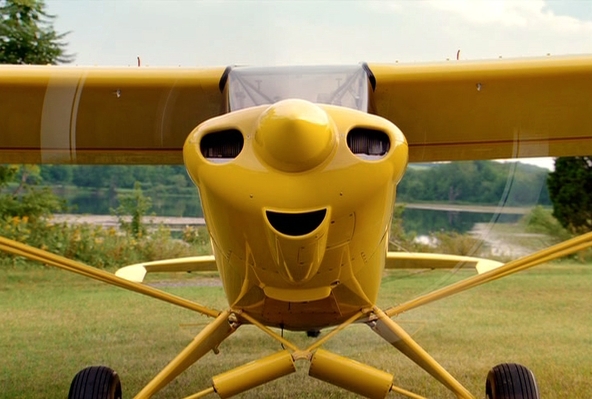Whether you are taking to the skies for business or pleasure, be prepared as you might suffer from “jet bloat,” the body’s increased volume of gas that occurs from airline travel – Seems your intestinal gases expand the higher you rise in altitude, which can lead to some uncomfortable bloating and pain. Chewing gum or sucking on candy to reduce the pressure in our ears while the plane is ascending can cause us to swallow even more air. Same for drinking caffeinated sodas — the more fizz, the more volume, experts say. The expansion of gases at high altitudes has been a topic addressed by the aeronautics industry for years. “Everybody has noticed this,” experts said. “Even though they don’t serve an awful lot of food anymore on the planes, the bags of chips are inflated like a little pillow. It wasn’t a little pillow on the ground.” The same thing happens in people. Most people carry about 400 milliliters of gas in their intestinal area, about the volume of a small cantaloupe, experts say. But people experiencing gassy problems may carry as much as a liter of gas. That volume at sea level can more than double at 30,000 feet. Fortunately for your neighbors, most of the resulting flatulence is odorless because it’s due to excessive air.
If you find yourself experiencing jet bloat and becoming gassier during airline travel, follow these guidelines for eating and drinking at the airport and while in flight:
- When scouring the food court, avoid anything that you’ve shown intolerance for on the ground. If milk intolerance is your downfall – avoid all dairy. Try to avoid foods that will probably make you gassy, such as fried foods, beans, bananas, cabbage, Brussels sprouts, or broccoli. If you get gassy, the volume will expand, even in the pressurized cabin as you reach flight altitudes – so there will be even more volume of gas, which can lead to discomfort from jet bloat.
- If you do eat gassy food, take over-the-counter Gas-X or CharcoCaps Homeopathic AntiGas Formula immediately, so you don’t inflate like a bag of pretzels as you reach cruising altitude. The AntiGas pills will stimulate the body’s defense system against the discomfort of intestinal gas.
- Drink beverages rich in electrolytes, such as tomato or fruit juices, which help with hydration. While water is also fine, avoid coffee, tea and sodas since they will dehydrate you, and the carbonation in the soda can cause gas issues. Since alcohol is also a dehydrator, hold off until you are on the ground at the hotel.
- Keep away from caffeinated drinks; instead, drink beverages rich in electrolytes, such as tomato or fruit juices.
The doctor says…
“Take bathroom breaks whenever the fasten-seat-belt sign goes off to keep blood and other body fluids circulating,” says Sandra Fryhofer, MD, a clinical associate professor of medicine at the Emory University School of Medicine in Atlanta. “Avoid caffeine, alcohol, and salt — all of which cause water retention — and drink at least 8 ounces of water for every hour in flight. Once on the ground, drink a cup of hot green tea and take 500 milligrams of vitamin B complex; both are natural diuretics.”
The trainer says…
“When you can’t get up and stretch, shift position in your seat at least every half hour — cross your legs, prop your feet on your carry-on, or lean forward and interlace your fingers in front of you,” says Keli Roberts, creator of the Time-Saver DVD workout series. “When you land, walk for 15 minutes at a comfortable pace to get blood moving in your lower limbs.”
The scientist says…
“The day before a flight involving a time difference of six hours or more, eat your meals and go to sleep three hours earlier than you normally would. This will lessen jet lag and its side effects, like bloating, by helping your body get into sync faster in the new time zone,” says Hava Siegelmann, PhD, director of the biocomputation laboratory at the University of Massachusetts at Amherst. Trying to acclimate before you leave can help you get better adjusted — and feel less bloated — when you land.
Article From: FitnessMagazine.Com, Charocaps.Com, and Newsguide.Us









11 comments ↓
Keep posting stuff like this i really like it
Many years ago I was a flight attendant. We called it Jet Belly. After a 3 day trip you would definately have a jet belly. Your recomendations will definatly help.
I often experienced this on long overseas flights and it was really painful at times, surprisingly many people I spoke with about this thought I was experiencing air sickness? the recommendations here of drinking tomato juice and avoiding coffee and sodas, are right on the money! I also plan to take some charcoal tablets along on my next trip..
Having recently taken 10 separate flights, of which the longer flights came with positively mortifying bloating and flatulence, I was really relieved to find this page. Like anyone else, I’d much rather discreetly take care of a such an issue with a visit or two to the lavatory, but was at my wit’s end with feeling like I had one of those party balloon gas tanks running constantly inside me. I’m more than a little relieved it’s not Just Me. As described here, there didn’t seem to be an odor, but I’ll definitely be taking this advice on board for future flights.
This is verrrry helpful. I get really gases when I go on 6hr flights and I am bloated like a real balloon through my stay. People see me and think am pregnant. My clothes don’t fit – it can be really ridiculous. I wonder, how can I stop the bloating after I have landed? This normally lasts for the duration of my stay until I return home.
We went to Louisville approx a week ago and my Mom is still bloated. She just told us tonight after Mexican food. We told her to drink alot of water and keep her knees raised up on a pillow. It doesnt look too bad but she is still bloated.
This is such great advice, I always worry before traveling because I know the consequence of ‘jet belly’, I love how you have written the piece, and great expert tips.
I’m currently in Sri Lanka but live in Dubai originally from London so travel has become a much more regular thing for me. I will be sure to implement some change pre and post flying from now on.
Thank you
Mark Setchfield
I usually have water and Mott’s Clamato juice, water and coffee on flights. This last trip i took i had, motts (small airplane cup size). But, on my connecting flight, i they gave me a 341ml can of Bloody Mary mix…i really felt like i had gained so much weight. Not to mention, I had water on the flight. I feel like, the sodium really did me in!
I didn’t feel flatulence, but as I was sailing before 4 flights of over 4 hours each and long transit time in between, my body retained a lot of water and my fingers swelled up and foot started paining, your article was a great help.
I normally have apple juice but this trip I had white wine to calm my nerves and help me sleep off. But I guess the wine helping me inflight caused distress after landing.
I think it has to do with they pressurize for 10.500 feet and some of us cannot tolerate 10,000 feet. And then we are sitting cramped and cannot stretch out. And then no one serves real food anymore and so we either eat junk or processed foods. I am going to stay away from sodas. Drink water and then Emergen-C when on the ground. My pain is sharp pains and then once on the ground and walking, I am okay. Traveling really screws with the body.
Thank you so much for posting this. On my recent flight, I was in so much pain. It’s good to know I’m not alone.
Leave a Comment